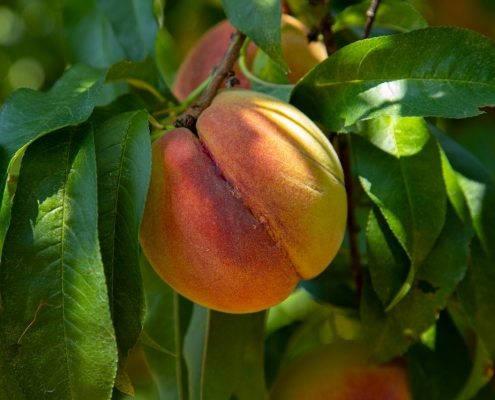As peach harvest begins, scientists find rootstocks that survive flooding
by Brad Buck, University of Florida
As you bite into a peach, remember farmers are harvesting the fruit this month and next in Florida.
Those growers and University of Florida scientists are always concerned about flooding because it can damage peach trees permanently and cause trees to die. As a result of Hurricane Irma in 2017, a few hundred acres of Florida peaches were lost due to flooding in orchards.
Flooding poses an issue for all crops, not just peaches. Beyond Florida, 20 million acres of farmland suffered losses nationwide due to floods in 2019, and studies show that floods will increase as climate change continues to challenge growers around the globe, said Ali Sarkhosh, a UF/IFAS assistant professor of horticultural sciences.
“If peach farmers experience flooding, the fruit size and quality can be adversely affected, and the tree may prematurely drop fruit yield,” Sarkhosh said. “We’re searching for flooding tolerance for peaches before a storm wipes out any farms.”
Tree fruit such as peaches is often grown using a scion-rootstock system, in which growers can select the best compatible scions (the above-ground portion of the tree) with rootstocks (the below-ground portions of the tree) to fit their operation. Scientists and nurseries join scions and rootstocks by grafting them together.
Scientists found three rootstocks worked better than “Flordaguard,” the one that is used most often in Florida. The rootstocks known as “MP-29,” “P-22′ and “R5064-5′ are better-suited to survive in areas prone to flooding than “Flordaguard.”
“In Florida, peach growers have relied on “Flordaguard’ rootstocks, because for years this was the only rootstock available that is resistant to the Florida peach root-knot nematode,” Sarkhosh said.
> Source: PHYS.ORG



 Credit: Pexel/CC0 Public Domain
Credit: Pexel/CC0 Public Domain Credit: Pexel/CC0 Public Domain
Credit: Pexel/CC0 Public Domain